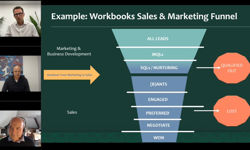
You don’t have to go too far back to remember a time when digital looked like the saviour for many publishing businesses. Revenue growth was double-digit, not uncommonly starting with a two or three but, fast forward just a few years and things look much tougher. Many are now seeing revenue growth slow or even decline year on year, a trajectory that doesn’t justify the investment required to build a strong digital presence.
There’s no better illustration of these challenges than two conflicting reports, released within weeks of each other towards the end of 2019. The first, the half year ad spend update from the IAB, painted a rosy picture. Digital ad spend was up 13% year on year, fuelled by strong growth in display and search. But, just three weeks later, came the Digital Publishers Revenue Index report from the AOP reporting a 3.7% decline in digital revenues for Q2 2019.
The AOP report, largely made up of the revenues of newsbrands and magazine publishers, is arguably a better barometer for the state of the publishing sector. This demonstrated just how tough many in our sector are finding digital whilst the likes of Facebook and Google still make hay, growing revenues 27% and 18% respectively in 2019.
Against this backdrop, publishers might be forgiven for giving up and trying something else but, having worked with a number of publishers bucking the kind of trends shown in the AOP report, there is a sustainable future for digital advertising for those who know which tools to deploy and how to deploy them.
At its core, as it ever was with any form of advertising, it’s about effectively connecting buyers and sellers. After all, who wouldn’t invest in growing their business if effective ROI can be proven to an advertiser. And it’s those publishers who’ve invested to deeply understand their readers and what commercial opportunities they present to advertisers, and beyond, who are enjoying the greatest success.
After all, who knows specialist interest communities better than the people whose businesses are dependent on them? The people who share their readers’ passions, tell them what to buy or how to improve a technique and to get the most from their lives.
This deep understanding about what makes them tick puts publishers in a unique position to demonstrate their value to advertisers and explore other ways in which they can have a win / win commercial relationship with them.
And to unlock this value, you need to understand the monetisation tools at your disposal, then decide which are best suited for your audience. For publishers, gone are the days of building a digital strategy solely based on chasing scale with a one size fits all strategy; now the victors are those who can develop multiple capabilities and deploy these to opportunity.
So, what are the essential tools that every publishers should have at their disposal?
As it ever was with any form of advertising, it’s about effectively connecting buyers and sellers.
Display advertising
Let’s start with display advertising, a market that just like digital overall, has seen massive disruption as programmatic trading became the norm, now representing 84.9% of all display spend according to the 2019 estimates from eMarketer.
Whilst this disruption has been a painful journey for many, with the shift to programmatic depressing yields, a significant number are emerging from the other side commanding revenues and prices equivalent to the days when ads were traded directly.
The secret of their success has been to provide buyers with unique, high quality, first party data that demonstrates the value of the audience to advertisers. The latest data management platforms (DMPs) collect valuable behaviours to segment readers, think bakers in the food sector or SUV drivers in motoring. These can be packaged and presented to advertisers as highly qualified, brand safe, audiences that can command a significant premium. And whilst scale helps, it’s not just the biggest publishers that can benefit from this approach – Google Ad Manager for Small Business provides tools that puts precise targeting into the hands of the smallest publishers.
Leveraging first party data in this way is also becoming increasingly valuable in an ecosystem where privacy and compliance in terms of GDPR, and the looming update to the ePrivacy directive, need to be at the forefront of digital publishers’ considerations. As, of course, does the limited lifespan of the cookie, but the one thing that publishers can be sure of during this uncertainty, is that those who have developed the art of understanding the value of a first party relationship with their readers will be those that can adapt the fastest to whatever the future brings.
Whilst important, data is not the sole success criteria in a programmatically traded world. Just as algorithms are making decisions on the value of your audience, they are also making decisions about the value of your real estate too. Viewability scores, the number of ads on a page and low audience engagement are all captured by buyers allowing them, over time, to make ever more informed buying decisions. So, publishers that present the highest quality inventory, paired with highly qualified audiences, will see even greater yield improvements both in the open marketplace or increasingly through private marketplaces and programmatic guaranteed deals.
The final pillar for a strong digital display business is ensuring that you have a range of commercial products, opportunities and formats to present to advertisers. Whilst traditional formats will still form the bedrock of revenue for many, having a range of different opportunities is vital for building campaigns to suit the needs of every advertiser. When I worked at Immediate Media, we embedded capabilities in all the areas you would expect, standard formats, video, social, native and the like but we also strove to innovate on an ongoing basis, coming up with new products to give our teams something new to talk to advertisers about on a regular basis and keep our offer fresh.
The secret of their success has been to provide buyers with unique, high quality, first party data.
Content solutions
Beyond display and programmatic, there are further great opportunities for specialist publishers as well, with an increasing number enjoying considerable success from arguably their strongest assets, sector expertise combined with editorial craft. This unique insight into understanding a sector, its consumers and how to communicate with them has become a real asset to many, particularly when it comes to delivering high value, multi-platform solutions to clients.
Across our sector, this success is evident with a number of the leading publishers having dedicated content studios to create and deliver content led advertising solutions to clients. Most consumer publishers now have in-house commercial content and creative teams including TI Media, Hearst, Immediate Media and Future who have The Foundry, Hearst Made, Imagine and Future Fusion respectively, teams that have featured prominently in award wins in recent years. These were not launched to simply win awards, but to develop new revenue streams. With multi-platform partnerships and content creation accounting for significant revenue growth in recent years, many estimate that something like 20% of all consumer magazine advertising revenue now comes from these areas.
And smaller publishers can get in on the act without the need to create a dedicated team, too. Editors are usually the most valuable asset when building these campaigns, even for the studios mentioned above, providing audience insight and comms skills that cut through to their audiences in a way that a generic creative agency may find difficult. All it takes is an understanding of the new commercial landscape, the vital role they can play in helping advertisers and above all else, a willingness to help!
Earlier, I referenced that publishers needed a digital toolkit, of which I’ve explored two of the essential elements, display and content solutions, but there are several more that help layer revenue on top. And, whilst not an exhaustive list, others that many specialist publishers are benefitting from include affiliate and ecommerce, lead generation and email, each of which, when customised for a specific market, can contribute good revenue.
Success in ecommerce lies not just in having the right commercial partnerships … but also in creating a content environment that encourages purchase.
Ecommerce
Taking affiliate and ecommerce first, as a number of publishers, most notably Future, have proven, this can be a substantial opportunity in its own right. Success in this area lies not just in having the right commercial partnerships in place, but also in creating a content environment that encourages purchase, often with articles that have been written specifically with this outcome in mind. This works particularly well for reviews based sites but the opportunity is bigger than many think. There are great examples of sites in sectors as diverse as music and entertainment where ticket sales or sales of subscription packages have driven meaningful revenues.
Others are also enjoying success in the related field of lead generation where advertisers are paying substantial commission for qualified leads. The trailblazing sector for this was motoring, a sector in which advertisers will pay in the region of £50-£100 for qualified brochure and test drive requests, and we are now seeing other markets follow this example with considerable success.
Publishers that present the highest quality inventory, paired with highly qualified audiences, will see even greater yield improvements.
My last example is an unloved, yet meaningful tool, whose heyday was in the early years of digital, email. Particularly for specialist publishers, this often overlooked direct communication tool, remains a favourite with smaller advertisers, allowing them a direct route to niche segments. It also has the benefit of building consumer databases, something that is becoming increasingly important in the post GDPR world in which we live.
The above are just a selection of the tools available to publishers. Clearly, there are many more than this article will allow, including marketplace businesses such as BuyaCar from Dennis, the pioneering ‘Bikes for Sale’ on Bauer’s MCN through to the considerable opportunities that exist in direct to consumer transactions. But they all share a common theme, which is that specialist publishers, with their sector expertise, are uniquely positioned to effectively connect buyers with sellers, benefiting from making the connections in the process.
So, next time you read a report that spells doom and gloom for publishers in digital, or another that says it’s only Google and Facebook who can win in digital, or indeed see your own revenues under pressure, remember there’s still plenty of opportunity. Many continue to grow their digital advertising businesses and develop new commercial opportunities; it’s just more complex than it once was. Just as it is in the broader publishing industry, simply relying on legacy revenue streams is no longer enough, but those who can adapt and diversify will continue to grow and thrive.
This article was first published in InPublishing magazine. If you would like to be added to the free mailing list, please register here.












